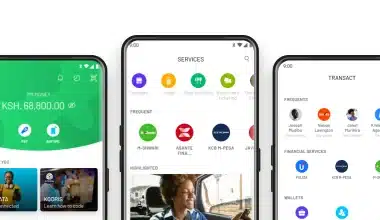At first look, an interest-free loan appears to have no interest charges. This implies that borrowing money is cost-free. You can continue to borrow that money for free, but only provided you adhere to the loan’s terms and conditions. An interest-free loan works essentially by having you repay the money borrowed with deferred interest – that is, interest is not charged right away. Continue reading to learn more about government and car interest-free loans, how to get students loan and the tax implications of interest-free loans to a family member.
Can You Get an Interest-Free Loan?
You might be eligible for an interest-free loan. Depending on the loan type, different borrowers may not be eligible. Some no-interest loans come with introductory deals that give 0% APR for a predetermined time.
This kind of financing may be available on dealer-financed auto loans, but you usually need a strong credit history to be approved. Additionally, 0% APR financing isn’t always available because auto financing offers frequently vary by model and may change based on manufacturer and dealer incentives.
Your credit scores may be less significant if you utilize a cash advance app to get quick cash before your next paycheck because cash advance providers might not run a credit check. To demonstrate your ability to pay back the money you borrow, you normally need a checking account with a positive balance and a consistent paycheck.
some buy-now, pay-later lenders run a mild credit inquiry to check your credit health. You must have a linked checking account, credit card, or debit card to use a buy-now, pay-later app and make a transaction.
Government Interest-Free Loan
A government interest-free loan is either directly supported by the federal government or is underwritten by private lenders with support from the federal government. Government loans must be repaid, typically with interest (they are not handouts).
Types of Government Interest-Free Loans
There are several government loans available for various uses.
#1. Agriculture loans
Several government loans may be available to help if you’re looking to launch or grow an agricultural business. To support family farms and ranches and to foster a robust agricultural economy, the USDA’s Farm Service Agency, or FSA, offers both direct and guaranteed agriculture loans. Farmers who don’t qualify for a private loan are the target audience for FSA loans.
#2. Business loans
Numerous business loans are available to support the funding of businesses of all sizes to help promote economic and community development. For some companies that are not eligible for financing from other sources, the U.S. Small Business Administration, or SBA, can guarantee loans. Additionally, it finances extremely tiny microloans to young or expanding small businesses to help them get the funding they require.
#3. Disaster-relief loans
Recovery after a tragedy can be costly and time-consuming. Loans for assistance after a disaster help people and businesses recover after a disaster that has been officially declared by the government. For loans of up to $2 million to repair or replace real estate, machinery, equipment, and other business property, qualified businesses and the majority of nonprofit organizations can qualify.
#4. Housing and home-improvement loans
To assist housing and growth, the government sponsors a wide variety of interest-free loan programs. These programs are offered for many demographics, including first-time homebuyers, Native Americans, and veterans.
#5. Education loans
Undergraduate and graduate students can get loans to help pay for their studies. To assist with paying for educational expenses, these loans, which often have lower interest rates than private student loans, may be accessible to eligible students and parents.
#6. Veterans Affairs loans
Some veterans, service members, reservists, and National Guard members may be eligible for a variety of government loans. Furthermore, surviving spouses might also be eligible for certain loans. Loans for refinancing homes, loans against specific life insurance policies, and mortgages with reduced interest rates and lower down payments are all possible with VA loans.
Interest-Free Loan for Students
The interest rate on a student loan is rising after several years of exceptionally low rates. federal loans for undergraduate students will cost 4.99% for the academic year 2022–2023, up from 2.75% in 2020–2021. You might be wondering if an interest-free loan for students is an option given the escalating cost of borrowing.
Do Interest-free Loans for Students Exist?
Most student loans have interest, so you’ll have to pay back more than you borrowed at first. Your balance can grow dramatically over time due to interest costs.
An interest-free loan for students may be a desirable option. They are typically provided by universities, government organizations, and nonprofit organizations. They have fewer options than other types of loans though.
Organizations that provide interest-free loans to students typically limit eligibility to particular groups, such as those who live in a certain county or who practice a particular religion. The loan maximums are typically lower than what you can acquire through regular student loans, and they won’t likely be enough to pay for your entire education.
Where to Find Interest-free Student Loans
Schools, state governments, and charity organizations are the most common providers of no-interest student loans, while there are other options available.
#1. Schools
Certain colleges and institutions run interest-free loan programs for present students. These grants are often for small sums and are meant to pay for unexpected needs.
#2. State Agencies
Some state government organizations also offer 0% interest student loans. The Massachusetts No Interest Loan Program is among the most well-known. eligible students may borrow up to $4,000 per academic year to pay for school, with a cap of $20,000, with 10-year repayment terms. Students must attend an approved Massachusetts school and have shown financial need.
#3. Nonprofit Organizations
Charitable and activist groups can be fantastic sources of 0% APR student financing. The structures of these programs differ; some give modest loans, while others will pay your remaining tuition costs.
Common Eligibility Requirements for Free-Interest Student Loans
An interest-free student loan is not available to everyone. They typically have stringent eligibility conditions set by the organizations and institutions that offer them. Borrowers frequently need to fulfill at least some of the following requirements, however, specifics vary by issuer:
- Financial need. Many interest-free programs demand that students prove their financial need, which is evidenced by the data they provide on their FAFSA. Other financial documents, such as utility bills, rental agreements, or bank records, may also be requested from students.
- Residency. No-interest loan programs frequently have a small geographic reach, giving loans to students only in certain states, towns, or counties.
- Academics. While some programs only take into account students’ financial needs, others demand that candidates have strong GPAs and test scores to be eligible for no-interest loans.
- School. The kind of schools that students may attend may be restricted by issuers, for example, by mandating that they attend only certain schools or public universities in the issuer’s state of operation.
Alternatives to a Student Interest-Free Loan
Student loans with no interest have a restricted range although they are offered. Investigate these other possibilities if you require more assistance paying for education.
#1. Gift Aid
Grants and scholarships are examples of gift aid. These forms of assistance don’t require repayment like loans do. Instead, businesses provide you with gift aid based on your accomplishments, character attributes, demographics, or other factors. Smaller prizes up to larger sums that pay the entire cost of school can be obtained through scholarships and grants. Through databases like FastWeb and CareerOneStop, you can discover opportunities.
#2. Work-study Programs
Some students may be eligible for work-study programs offered by the government or states. If you qualify, you’ll get part-time work in your field of study, and you can use some or all of the money you make to help with educational costs. You must submit the FAFSA and inquire about the program requirements with the financial aid office at your college if you want to be considered.
Income share agreements (ISA) are becoming more and more common although they are still relatively uncommon. Unlike conventional loans, ISAs provide you cash upfront but call for you to pay back a portion of your salary for a certain length of time after graduation.
#4. Low-interest Student Loans
You may be eligible for low-interest loans from the following sources if interest-free student loans are not an option for you:
- Federal loans.
- Institutional loans.
- Private student loans.
Interest-Free Loan for Car
A car loan with a 0% APR, or annual percentage rate, allows the borrower to repay the loan over an extended period without paying interest. In other words, there is no interest charged. These are also referred to as “interest-free loans” or “no-interest loans,” which means that each time you make a monthly payment, you are directly paying the seller for the item you purchased rather than the lender, who will not receive any profit.
Are You Eligible for an Interest-Free Car Loan?
Not everyone is eligible for a car loan with no interest. Lenders or dealers may examine several standards, such as:
- Credit score: To be considered for a loan with a 0% APR, you may need a credit score of at least 740. Depending on the dealership and the car you want to buy, there may be a minimum credit score requirement.
- Outstanding debts: To make sure you can repay your car loans, some lenders may examine your outstanding obligations. They may also look at your debt-to-income ratio, which might show how well you can manage your monthly payments given your income.
- Monthly income: Having a consistent monthly income will help you qualify for a 0% APR contract because it shows you’ll have the funds to meet your car loan payments. As a result, people who have full-time jobs or a history of making enough money each month from a variety of sources may be more likely to be approved than those who don’t.
- Employment history: Even if you have full-time employment that can provide you with a reliable monthly income, it doesn’t guarantee that the income will continue if you quit. Lenders may therefore verify that you have a history of solid employment.
Interest-Free Loan for Car Limitations
Deals with 0% APR do have some significant restrictions and downsides. The good news is that, once you are aware of these restrictions, you can decide for yourself whether a 0% APR offer is appropriate for your needs and how much you should spend on each purchase.
#1. Vehicle Choice
Only specific cars may be eligible for the dealership’s 0% APR loans, which are often chosen based on whether they think they can recoup their costs from the sale. This implies that if you decide that a loan with a 0% APR is essential, your options for cars may be limited.
#2. Payback Options
A no-interest loan may have a different payback schedule than a standard loan. For instance, these loans often have shorter repayment terms. The dealership is more likely to profit from receiving your payment back fast when interest isn’t accruing.
#3. Added Charges
A 0% APR loan can spare you from expensive interest payments, but it won’t shield you from additional costs the seller or the dealership might tack on to the total cost of the vehicle.
If a dealership provides a loan without interest, it may intend to recover part of its costs by charging extra for services like maintenance, insurance, or unique features.
Tax Implications of an Interest-Free Loan to a Family Member
Mortgages and car loans, which can include reams of paperwork and stringent restrictions, come to mind when people think about loans. What about unofficial loans from family or friends, though? There are several crucial tax implications to keep in mind if you’re considering asking a family member for an interest-free loan or considering lending money to a close friend or relative. The tax implications of a loan to family members will be the main topic of this part.
Are Family Loans Taxable?
For either the lender or the borrower—or both—tax liabilities may result from loans between family members. Everything relies on the size and nature of the loan.
First and foremost, family loans should always be formalized using a simple contract that is signed by both parties. This is a requirement of the IRS; without a contract, the IRS might classify the transaction as a gift rather than a loan and subject it to gift tax laws.
Additionally, the IRS favors interest being added to loans given to family members. Loans without interest are conceivable, but the tax reporting regulations are substantially more complicated.
Not the loan itself, but the interest payments, may be tax deductible. Therefore, if you lend someone $50,000, neither of you will have to pay taxes on the amount of the loan; however, you will probably have to pay taxes on the interest payments you receive from the borrower.
Things become a little complicated because if you don’t charge interest, you might have to pay tax on the interest you could have. Usually, it’s much simpler to simply add a small amount of interest to the loan.
Tax Implications for the Borrower
There are usually no tax implications from the borrower’s perspective. Typically, neither the borrower nor the loan will be subject to income tax. In rare circumstances, borrowing money from a relative may result in a tax benefit for the borrower. This only applies if the loaned funds were utilized to buy a house.
The loan arrangement might be set up to look like a second mortgage if the funds are used to buy a home. A CPA could be needed to draft a suitable loan agreement in this situation.
The guidelines for the home mortgage interest deduction may allow the borrower to deduct the interest portion of payments if the loan is set up as a second mortgage. But because this can be complicated, it’s best to get advice from a tax advisor.
Additionally, the borrower must itemize deductions to be eligible for the mortgage interest deduction. Since only 13.7% of American taxpayers itemize their deductions, most borrowers won’t be affected by the home mortgage interest deduction.
Tax Implications for the Lender
The biggest tax implication of lending money to a family is that the lender will have to pay taxes on the interest they receive.
For instance, you would make around $4,000 a year in interest income if you lent $100,000 at a 4% interest rate. This $4,000 will be considered taxable income, so you must include it in your tax return.
The strange part is that you can be required to pay tax on the interest you should have earned if you charge no interest or an interest rate that is lower than the applicable federal rates (AFR). If you’re unprepared, these alleged “imaginary interest payments” may cause you some tax difficulties.
Is it possible to get interest-free loans?
Although genuine interest-free personal loans are uncommon, some lenders do provide them.
Which loan type has no interest?
Subsidized loans are loans for undergraduate students who need money, which is calculated by subtracting your estimated family contribution from your cost of attendance and subtracting any other forms of financial aid (like grants or scholarships). While you are enrolled in school at least half-time or during deferment periods, your subsidized loans do not accrue interest.
What is the meaning of an interest-free loan?
Loans that don’t require interest payments are known as interest-free loans. Only the original principal must be paid back to the lender for interest-free loans.
What is the hardest type of loan to get?
Unsecured loans are more difficult to obtain and may have higher interest rates because lenders heavily rely on your credit score and other financial data to evaluate if you qualify for a loan.
What type of loan is easiest to get?
Payday loans, car title loans, pawnshop loans, and no credit check personal loans are the loans that are the simplest to be approved for.
Does the government give interest-free loans?
People cannot receive “free money” from the government. Only states and organizations normally receive federal grants.
How do 0% interest loans make money?
Since the business pays the interest on behalf of the end user, the banks profit from the desired interest rates. Consequently, the consumer can obtain the goods for the same price.
How can I avoid interest on my personal loan?
You can avoid paying interest if you pay the entire amount. If you are unable to make the minimum payment due, try to make a lower contribution against your statement debt.
How long can a loan be interest-free?
You might be able to obtain an interest-free loan for over two months if you carefully plan your purchases.
Related Articles
- HOW TO USE CREDIT CARD: Detailed Guide
- Student Finance: A Complete How-to-Apply Guide
- $2000 LOANS: What to Know About Getting a $2000 Loan With No Credit Check
- Business Structure: Meaning, Types, Examples & All You Need
- How to Name Your Business Legally: Best Tips & Ideas






